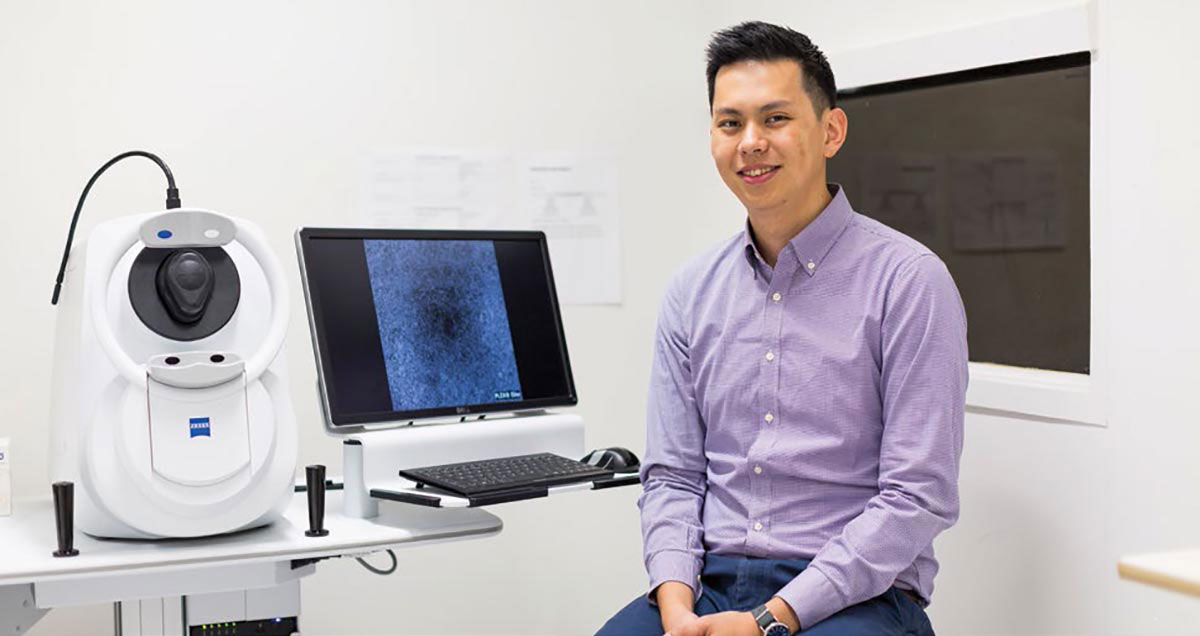This website uses cookies so that we can provide you with the best user experience possible. Cookie information is stored in your browser and performs functions such as recognising you when you return to our website and helping our team to understand which sections of the website you find most interesting and useful.
Story
Using AI to take the guesswork out of glaucoma
By combining the latest imaging techniques with artificial intelligence, CERA researchers are developing new ways to identify and treat a range of conditions, including glaucoma.
Glaucoma affects as many as 1 in 50 Australians, with half of those unaware they are living with the condition. It is usually caused by high intraocular pressure, due to fluid in the eye not properly draining, which gradually damages the optic nerve resulting in a permanent loss of vision.
The condition is painless and typically progresses slowly but identifying those who are likely to lose vision quickly is a difficult task.
Specialists use visual field tests to track the progress of a patient’s vision loss. The test, which requires a patient to respond to brief flashes of dim lights shown throughout their field of vision, can produce inaccurate results due to its subjectively challenging nature.
“It’s a bit like playing the board game Guess Who?” says Dr Zhichao Wu, Head of Clinical Biomarkers Research at CERA.
“Every time a person with glaucoma comes in to see the specialist they do a visual field test, but you have got to do that every six months for up to six years before you can be certain that there is real change happening to a patient’s sight.
“If someone is truly losing vision at a rate that will significantly affect their functional vision and it takes that many years to find out, you’re going to find out when it’s far too late.”

Looking for signs
Dr Wu’s new Clinical Biomarkers Research team is working to identify new biomarkers of glaucoma using artificial intelligence that will reduce the reliance on visual field tests and find those patients who are in urgent need of care.
Biomarkers are measures of processes in the body that can be used to identify a disease and monitor its progression. The more that can be found, the more ways a practitioner can track the progress of a particular disease.
Using state-of-the-art imaging of the eye and artificial intelligence, Wu’s new team will find new biomarkers that will help precisely determine an individual’s rate of glaucoma progression.
“The new imaging will allow us to get a more complete and detailed picture of the nerve tissue inside the eye, and we will exploit for pattern recognition to pick up characteristic patterns that indicate very early signs of progressive glaucoma damage,” says Dr Wu.
This new research will enable the treatment of each patient to become highly individualised, necessary to prevent irreversible vision loss.
“We’re aiming to go from six years to six months in terms of our timeframe for detecting glaucoma progression,” says Dr Wu.
AI revolution
Using artificial intelligence to find new ways of identifying and monitoring disease is at the heart of several projects currently underway at CERA. Professor Mingguang He, Head of Ophthalmic Epidemiology at CERA, is developing an integrated AI screening system to find patients who are at risk of losing their sight from diabetic eye disease, glaucoma or age-related macular degeneration.
In other studies underway at CERA, led by Associate Professor Peter van Wijngaarden and Dr Xavier Hadoux, novel imaging methods are being combined with artificial intelligence to investigate biomarkers for Alzheimer’s disease, diabetic retinopathy and a range of other conditions.
Overall, this work aims to provide practical benefits for patients who otherwise might have not had their disease identified soon enough to start treatment to avoid vision loss.
“I’m an optometrist, and it is surprising just how often sight-threatening eye diseases are identified in the context of a routine eye check or glasses update,” says Dr Wu.
“In glaucoma people sometimes turn up with half their vision gone. We should have picked that up years and years ago.
“Our hope is that with new imaging methods and AI tools we can be better equipped to detect eye disease and save sight.”
Visit our donate page to support our work aiming to achieve better treatments and faster diagnosis of eye conditions.

